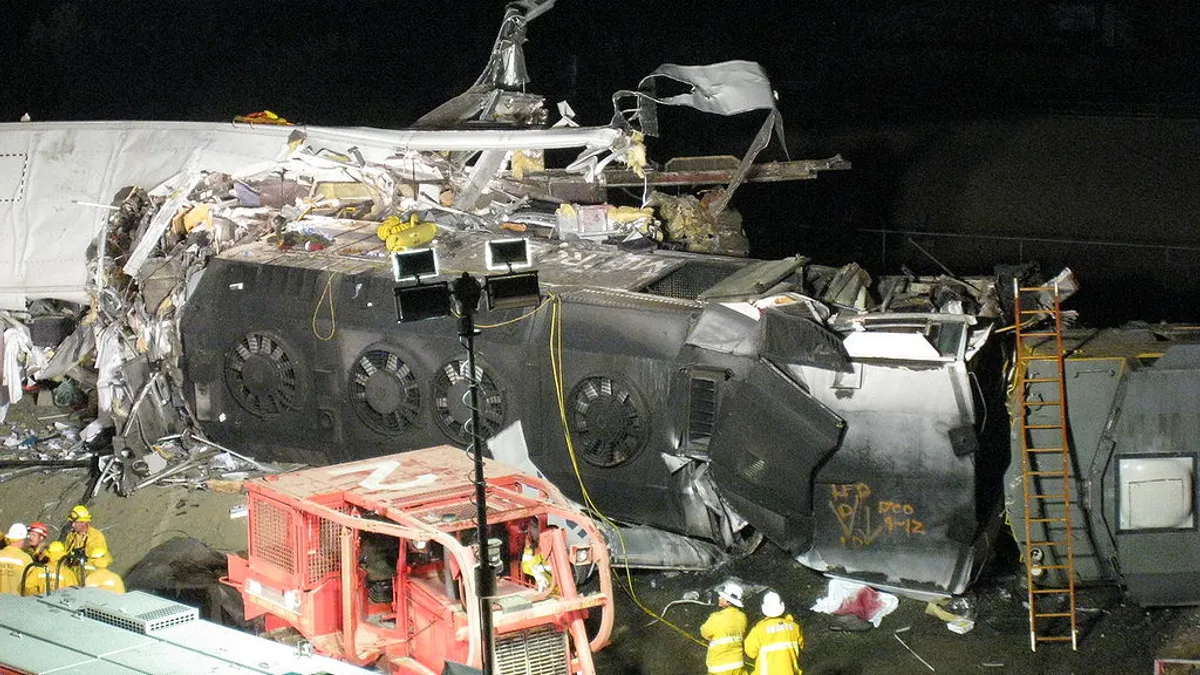Dive Brief:
- Though the full implementation of Positive Train Control (PTC) technology is moving slowly, the Federal Railroad Administration reports that freight railroads have made a 3% increase in Q3, with BNSF leading the way in Class I implementation.
- Full PTC implementation, which must be completed by December 31, 2018, aims to avoid head-to-head collisions among railroads, but requires railroads to update locomotives, track segments, radio towers, training, routes while implementing a safety plan and acquire a spectrum.
- Freight railroads lead the way in implementation, but are still far from completion. Only 38% of freight locomotives are equipped, with only 12% of route miles PTC enabled, although 78% of radio towers have been installed and 50% of freight operators have been trained.
Dive Insight:
When the law was passed in 2008, railroads were required to be PTC compliant by December 31, 2015. The legal, technical and financial complexities were not solvable in that period of time, however, so Congress granted a three year extension for full implementation.
Many freight and passenger railroads are complying with the mandate, but updating 60,000 miles of railroad infrastructure is challenging. Freight railroads' slow and steady progress is a positive sign, but a weak freight transportation market hardly helps to ease railroad concerns over the mandate's expense.
Railroads likely hope the Trump administration's $1 trillion promise will provide much needed aid.
Yet, the delay in installing PTC equipment can cost significant losses in lives and property damage. Between 2009 and 2011, property damage to vehicles struck by trains averaged over $7,500 dollars, while damage to the train totaled more than $8,000. Further damage to the railroad infrastructure, which we are now struggling to maintain, neared $1,000 per incident.
Tragically, it took a deadly crash in Hoboken, NJ to reanimate the urgency for PTC implementation. The local transit authority had requested and received a waiver from federal officials exempting it from the necessity of installing PTC. Though the waiver included a demand that a comparable speed reduction device be substituted, transit officials have not confirmed the required changes were made.
Meanwhile, daily reports of freight train crashes, including head-to-head collisions, abound. Among Class I railroads, only BNSF has implemented the technology in over 40% of its locomotives, although all have made significant progress in installing radio towers.













